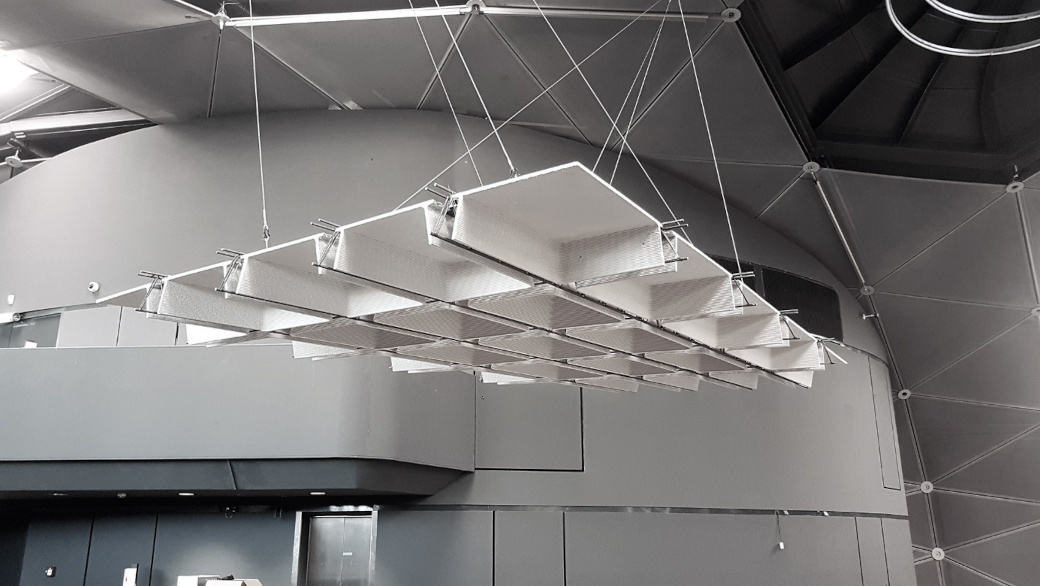3D*3B - 3D-Concret Printing, Reinforcement for low carbon and bending stressed structures.
Short Description
Starting point / motivation
3D extrusion processes with cement-based mortar materials are the starting point for the present application. This technology currently offers the possibility of producing unreinforced components very precisely and automatically at high speeds with low material input. This is the first time in the history of concrete and reinforced concrete construction that the construction of a costly formwork, which is essential, is no longer necessary.
Contents and goals
Due to this characteristic of a formwork printer, the aim is to combine the technology with the standard processes used in building construction in order to make greater use of the potential for reducing concrete cubature and thereby lower CO2 equivalents for load-bearing structures in building construction.
A major limitation here is the lack of standardised requirements for the design of unreinforced and reinforced printed concrete materials and the components manufactured using them. This means that the technology is far from being integrated into standard BIM-compatible planning and design processes.
The application of 3D printed components as voids in the construction process leads to increased geometric complexity, which in turn increases the demands on the construction site processes. For example, the installation and placement of the 3D printed concrete components and the steel reinforcement for the cast-in-place concrete.
The aim of the project is
- to establish a basis for numerical simulations of unreinforced and reinforced 3D printed concrete components by means of systematic development of test set-ups and test series.
- A further objective is the development of mass-relevant, predominantly flexural stressed elements and therefore reinforced applications for building construction. Here, the focus is on ultralight façade panels with reinforcement integrated into the printing process and on panel- and slab-like, structural elements such as ribbed ceilings that use lost formwork and 3D printed void bodies for mass reduction. Here, issues of supplementary steel reinforcement and construction logistics are in focus.
Methods
The project is triggered by impact. Starting point is research in building typologies and its load carrying structures. A matrix for different spans and supports helps to classify and optimize cross-sections. Boundary conditions like noise insulation and thermos active building systems are in the focus.
These results will be subjected to a technical feasibility study, regarding the digital fabrication of 3D printed molded parts, reinforcement and construction logistics. Based on BIM data structural optimization software and LCA databases are connected. The results will be implemented in a decision matrix, which supports early design and planning steps.
Expected results
After completion of the project,
- data and methods for the characterisation of 3D printed concrete components will be available, which will enable numerical simulation in the design and planning phase and can provide the basis for future production monitoring.
- The project clarifies and evaluates on the basis of selected application examples the potentials of 3D printed concrete components for the reduction of concrete cubature and the associated CO2 equivalents in building construction.
- Construction processes and construction logistics (placement of 3D printed concrete components and steel reinforcement for in-situ concrete) are developed, tested and evaluated for BIM-compatible processes.
Project Partners
Project management
Stefan Peters - Institut für Tragwerksentwurf, TU Graz
Project or cooperation partners
- Bernhard Freytag - Labor für konstruktiven Ingenieurbau, TU Graz
- Manfred Gronalt - Institut für Produktionswirtschaft und Logistik, Buko Wien
- Peter Weissmann - Baumit Beteiligungen GmbH
- Gerd Unger - AVI Alpenländische Veredelungs-Industrie Gesellschaft m.b.H.
Contact Address
TU Graz - Institut für Tragwerksentwurf
Stefan Peters
Technikerstraße 4/4
A-8010 Graz
Tel.: +43 (316) 873-6211
E-mail: stefan.peters@tugraz.at
Web: www.tugraz.at/institute/ite/

